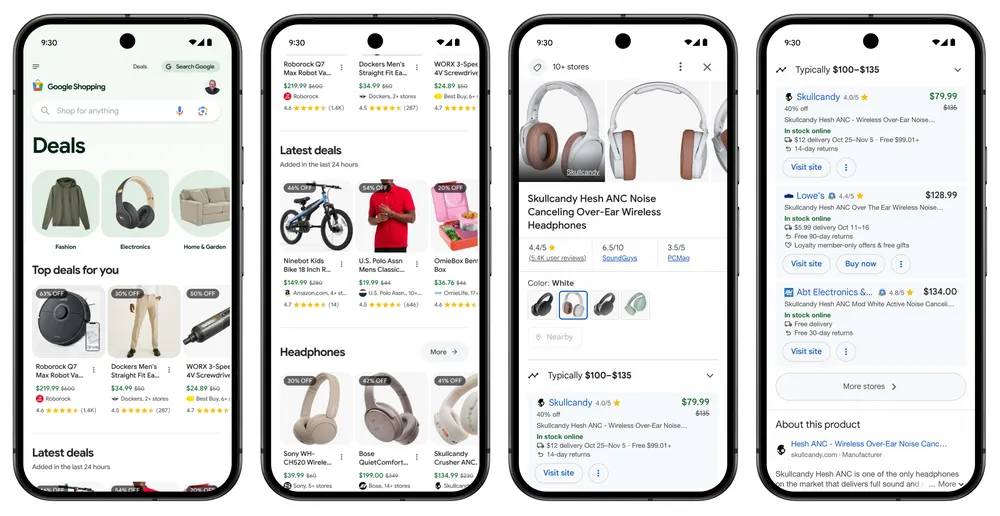Every year, at DWG, we try to predict the new trends on the web. We have had a pretty good batting average, so here is what we foresee for social media in 2025.
The Evolution of Social Media
Since its inception, social media has undergone significant changes. From simple platforms for connecting with friends and family to complex ecosystems that drive business growth, social media has become an essential tool for marketers. The rise of artificial intelligence (AI) has further transformed the social media landscape, enabling businesses to leverage AI tools to analyze user behavior, create personalized content, and optimize their online presence.
One key trend in social media evolution is the increasing use of AI-powered chatbots and virtual assistants. These AI agents can help businesses automate customer service, provide personalized recommendations, and create content. For instance, AI-powered chatbots can analyze user data and preferences to offer tailored product suggestions, improving the overall customer experience.
Another significant development in social media is the growing importance of content marketing. As users become increasingly discerning, businesses must create high-quality, engaging content that resonates with their target audience. AI tools can help content teams develop effective content strategies, optimize content for search engines, and even generate content using generative AI.
However, as social media evolves, businesses must prioritize human oversight and ensure that AI tools are used responsibly. By striking the right balance between AI-driven automation and human creativity, businesses can harness the power of social media to drive growth, reduce costs, and improve customer engagement.
Generative AI Agentic LLM Models Reach +100 Million Users
-
-
- It’s no secret that inference models that are better at reasoning are the next frontier as the AI training data pool is drained. Better reasoning opens the door to AI agents and LLM scripts that perform actions for us, like buying a product or downloading a whitepaper.
- So far, agents like Shop Like a Pro or Google Mariner are still nascent and require extensive oversight. But in 2025, I expect a breakthrough that will drive adoption past the 100m user ceiling.
- Agents are easier to monetize because they save users time in a much more tangible way than answering. Doing over talking.
- The AI front runners also seem ready for prototypes, as we’ve seen at the hands of the agents that already launched.
- The monetary incentive is there: charging for time savings or cheaper products is pay-worthy value.
- Marketers will have less control over the early stages of the user journey as consumers and B2B buyers explore LLM chatbots and agents. Clicks and search volumes for high-volume keywords will likely shrink in specific verticals.
-
More AI Victims
-
-
- I expect many more victims in 2025 as AI destroys the margins of whole industries and leaves slow-moving companies behind.
- Some industries are in a tough spot: translation, dictionaries, tutoring, and outsourced call centers.
- AI will give birth to new industries we cannot even imagine yet and might also revive some forgotten players, like Oracle.
- In 2024, we’ve seen the first AI victims: Chegg and Stackoverflow.
- New technologies always create winners and losers. The more powerful the technology, the bigger the shuffle.
-
Implications
-
-
- We’ll see more pivots as companies on the hot seat must find other growth markets.
- We’re likely seeing layoffs, consolidation, and acquisitions of companies with eroding margins.
-
AI Automation Becomes The Default For Content Marketing Teams
One trend we are very bullish on is system building, also called GTM Automation in the B2B world. AI and No-Code tools allow Marketers to chain and automate workflows instead of manually performing them. Data analysis plays a crucial role in comparing various AI tools for SEO tasks, highlighting how some tools excel in content generation while others, like Claude, are particularly strong in data analysis.
Today, AI automates significant parts of lead funnels, post-purchase onboarding, and SEO or advertising.
In 2025, system building will become necessary as marketing teams either stay small or become smaller due to budget constraints and economic uncertainty.
Implications:
Smaller teams, freelancers, and consultants become more capable and thus can exert more power. The impact of a single marketer grows if they’re skilled, but mediocre marketers might have to find another area of work. Effective content writing will become even more crucial as automation tools take over routine tasks. However, human oversight is essential for ensuring creativity and originality in content creation.
Marketers will start Agencies that set up automation systems for other companies.
AI Overviews Evolve
Google’s artificial intelligence overviews will morph as the company iterates on the format.
Some changes I could see are personalization based on your searches and favorite websites, video answers, or a NotebookLM integration.
AIOs will also show for +50% of queries.
New models, especially multimodal ones that can understand and answer with more than text, could improve the user experience and strengthen Google’s moat.
Google has to find ways to defend itself from LLMs like Chat GPT or Perplexity, which are not under the same pressure to maintain margins and revenue growth rates.
Implications:
SEOs need to continue tracking, experimenting with, and adapting to changes in search engines like Google. Keyword research is crucial in enhancing SEO strategies, as it helps identify relevant keywords that improve content visibility and ranking on search engines. Pressure on Google extends to SEOs.
This is not a time of stability, as we have had more or less over the last two decades, but a time of agility, flexibility, and adaptation.
Reddit Becomes Part Of The Default Channel Mix For Organic Traffic
Marketers will leverage Reddit much more for advertising, creating content, and audience insights in 2025.
Reddit’s advertising revenue will maintain its growth rate, and its stock price will keep climbing (no investing advice).
The largest forum on the web is now one of the largest sites, as Google features it prominently for almost every query.
Since topics organize threads instead of interests, Reddit can show ads based on what users discuss instead of their behavior.
The company keeps expanding and improving its advertising stack, offering more and better targeting.
Reddit uses AI to translate its US content into other languages to enter other markets. This helps reduce costs associated with entering new markets by streamlining the translation process and eliminating redundant tasks. Together with Google’s ranking boost for forums, Reddit’s growth will continue. This approach is part of Reddit’s broader content strategy to enhance user engagement and market penetration.
Implications:
Reddit is growing as an intent-based alternative to Google. Integrating relevant keywords into content is crucial for improving search engine visibility and aligning with audience search queries. Markets will advertise on both platforms, but only Google has provided this type of performance ad.
Reddit will also provide marketers with more valuable insights, helping them better understand their target audience and create more valuable content.
More Sites Cloak For LLMs
In 2025, DWG expects a few prominent companies to create “bot-only” versions of their sites optimized for LLM crawlers. Incorporating an effective SEO strategy by utilizing AI keyword tools will be crucial in this process, as these tools help identify and integrate relevant keywords into website content.
LLMs are hungry for fast sites with lots of structured content, but they don’t penalize cloaking.
Implications:
The web could become a better home for (good) bots as more users instruct LLMs to retrieve information or make purchases. Human activity could shrink and be replaced by bot activity, whether this will lead to net-negative or positive open web activity.
The Current Google Shopping Tab Will Become The Default
The new, AI-personalized shopping experience behind Google’s shopping tab will become the default search experience in the main tab for shopping-related queries.
Aligning content with user intent is crucial to creating more relevant and engaging content, especially as AI keyword tools analyze search behavior.
Google often treats tabs as a beta environment for new experiences. In 2020, Google made the shopping tab the default experience.
Google wants to break Amazon’s e-commerce dominance to increase revenue growth, especially as AI disrupts the classic search results.
Implications:
Personalized results are more challenging to track. If the current shopping tab becomes the default, average search results might become even harder to track due to product grids. As a result, marketers need to optimize based on the little data Google still provides or lean on other ways to understand whether they are optimizing in the right direction.
AI-generated Audio And Video Hits Mass Adoption
-
-
- We’ll see a lot more YouTube channels and podcasts use AI-generated b-rolls and ads.
- The technology is getting there: Elevenlabs launched a new voice generator like NotebookLM and Google’s Veo 2, and OpenAI’s Sora should soon be removed from the waitlist.
- If NotebookLM’s podcasting feature’s success has shown us one thing, it’s that multimodal AI output is getting ready for showtime.
-
Implications:
-
-
- The production cost of video and audio formats will sink dramatically.
- Deception and clickbait could reach new highs.
-
Google And Apple Divorce Over Virtual Assistants
Google ended exclusivity agreements with Apple, Samsung, and other suppliers amid the DoJ antitrust lawsuit.
Even though the DoJ asks for much more, such as Google selling clicks and query data, the most realistic outcome is a settlement ending exclusive distribution.
Google itself suggested loosening its agreements (source) to mitigate possible remedies.
The DoJ antitrust lawsuit initially focused on those agreements. In his memo, the ruling judge (Mehta) clarified that he’s not a fan.
Implications:
-
-
- Google won the search game, so I don’t expect remedies to change that. Instead, any remedies will impact Google’s position in the AI game.
- Losing exclusive distribution agreements could mean that Google has to fight for its position instead of winning by default on over half the market.
-
Apple Or Open AI Announce Smart Glasses
-
-
- Apple or Open AI will join the smart glasses market with a device announcement to compete with Meta.
- I lean more towards Open AI since Apple already has a secondary device with its watches, and Open AI has officially started to work with Jony Ive, the designer of the iPhone.
- Meta is running away with smart glasses. Meta Ray Bans make up 60% of purchases in Ray Ban stores.
- The smart glasses market is on track to hit $10.8 billion by 2030, offering a billion-dollar opportunity for the winner.
-
Implications:
-
-
- Owning a successful hardware device with mass adoption could be a valuable defense to OpenAI or another fruitful business for Apple.
- For marketers, the implications could be a change in consumer behavior, like more live streams, or new content formats, like smart glasses answers. However, adoption is still so far out, and the implications are so unclear that it’s hard to predict where things are going.
-
Conclusion
When we look at what’s coming in 2025, it’s very interesting. AI will become smarter, people will change how they use the internet, and platforms like Reddit becoming major players. We will have AI assistants and AI employees used by people and cortporations!
People will be using AI to help them shop, search, and make decisions, while Corporation will be using AI ro help them sell, improve their search results, and suggest decisions to their end-users. AI to AI conversation will become much closer to a norm. And, beyond that marketing and creativity will rapidly transform.
So, adaptability will be crucial. Companies that embrace AI automation while maintaining human oversight, optimize for new search experiences, and leverage emerging platforms will likely thrive. Meanwhile, those slow to adapt might find themselves joining the ranks of AI’s “victims.”
For marketers and content creators, 2025 won’t just be about keeping up with these changes – it’ll be about strategically choosing which trends to invest in and which to monitor from a distance.
From figuring out how to use AI tools effectively to getting ready for new ways people search online, and even preparing for smart glasses (yes, that’s really happening!). It’s not about chasing every shiny new trend that pops up – we’ve all seen companies burn resources trying to do that. Instead, focus on finding the tools and strategies that actually move the needle for your business, then make them work hard for you.
Let’s get real about 2025 – it’s going to shake things up in ways we haven’t seen before.
Some companies will embrace these changes smartly, while others might struggle to keep up. The key isn’t just staying on top of what’s new – it’s about being smart enough to know which changes matter for your audience and flexible enough to adapt when they do.
Here at DWG, that’s exactly what we’ll keep doing – watching the horizon for what’s coming next and helping our customers with smarter choices about where to put their energy and resources. After all, we’ve been doing this long enough to know that it’s not the strongest or the biggest that survive – it’s the ones who know how to adapt.
After all, in the world of digital marketing and content strategy, the only constant is change – and 2025 promises plenty of it.








